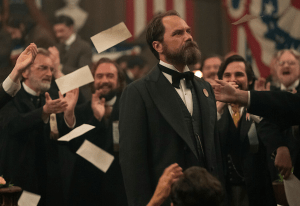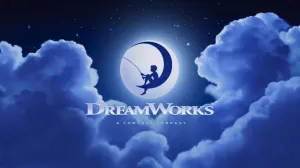Netflix has been producing and distributing films for several years now, long enough for the streaming service to develop a few patterns with its original slate. There is a line of high-brow, theater quality films aimed at awards season (Roma), the truly terrible TV movies with zero substance to speak of (Game Over, Man!), and, of course, the steady output of romantic comedies that results in both smash hits (Always Be My Maybe) and cringey teen melodramas (The Kissing Booth). However, the true “Netflix Movie” isn’t really any of these, as the streaming service has started to create — and become known for — its own unique brand of mediocre film: movies designed to make you think, but dumbed-down to the point that you don’t have to.
Videos by ComicBook.com
Bird Box and Bright are some of the best examples of this algorithm-inspired formula, as they feature larger-than-life concepts that could have been great at one point, but were picked over and altered throughout development to make sure every viewer would have something to talk about on social media. After all, this is how Netflix grows its brand and, in turn, makes its money. This leads us to the new film In the Shadow of the Moon, in which Netflix elevates and further masks its industry-defying system.
In the Shadow of the Moon, from director Jim Mickle and writers Gregory Weidman and Geoffrey Tock, is the epitome of this Netflix formula. In other words, it’s a smart film made for dumb audiences.
This isn’t to say you’re unintelligent if you watch Netflix movies, or even if you end up really digging In the Shadow of the Moon (it’s actually rather engaging for most of its run time). But this film believes everyone watching it is either too dense to understand its plot or too distracted to pay any attention.

Shadow of the Moon is about a Philadelphia police officer named Locke (Boyd Holbrook) who accidentally kills a serial murder suspect, Riya (Cleopatra Coleman), in 1988, only to see her mysteriously return in 1997 and continue killing. Locke believes that Riya is moving through time in the opposite direction as everyone else, as she has seen the future happen before arriving further into the past. This process continues every nine years and Locke spirals out of control trying to chase down a killer lost in time, while the rest of his life continues on without him.
The plot itself is rather interesting, smoothly blending together a grimy cop drama with a race-against-the-clock time-travel thriller, and it mostly works for the first 90 minutes. Mickle drives the idea of slow-motion into the dirt in an attempt to make audiences believe they’re watching a more elevated action flick, and Michael C. Hall goes out of his way to give entirely too much life into a side character that doesn’t exactly need it — the thickness of his distracting accent can be cut with a knife. Everything else about the first two acts manages to land rather smoothly. Holbrook is focused and sincere in his leading role (a far cry from his lackluster performance in The Predator) and the offbeat story structure of consistent nine-year time jumps keeps the whole plot moving quickly.
It’s when the story reaches the year 2015 that everything falls apart. The twist, while unexpected, is executed in the most uninspired fashion. What should be the most pivotal and exciting scene in the entire film is, quite frankly, an absolute snooze, but what happens next is even worse.

The twist helps you makes sense of every head-scratching moment throughout the movie, and the instant you finally know what’s going on, it all falls into place. That’s what a twist is supposed to do in this situation, so even though the idea is cheesy, over-the-top, and disappointing, it’s at least effective. Anyone watching will understand the entire film once all is revealed, but the creative team missed that memo altogether. The pulling back of the curtain is followed by a recap of the entire film to that point, restating every story beat and not-so-subtle hint in the most straight-forward and heavy-handed manner to ensure that you couldn’t possibly miss a thing. It wouldn’t have the least bit surprising to see Holbrook turn to the camera and scream, “DO YOU GET IT YET?!” The whole thing feels strangely insulting and leaves you with a bad taste in your mouth as the credits roll.
All in all, In the Shadow of the Moon‘s faults are few, but they are entirely too obvious and frustrating to ignore. What starts as a thrilling battle cry of a capable filmmaker’s vision ends as nothing more than a disappointing bellow, destined to be lost in the vast reaches of an endless streaming library. After one weekend in the spotlight, Shadow of the Moon will be replaced by another film exactly like it and no one will bat an eye. It’s pretty good, pretty bad, and ultimately forgettable. You know, like a Netflix movie.
Rating: 2 out of 5








